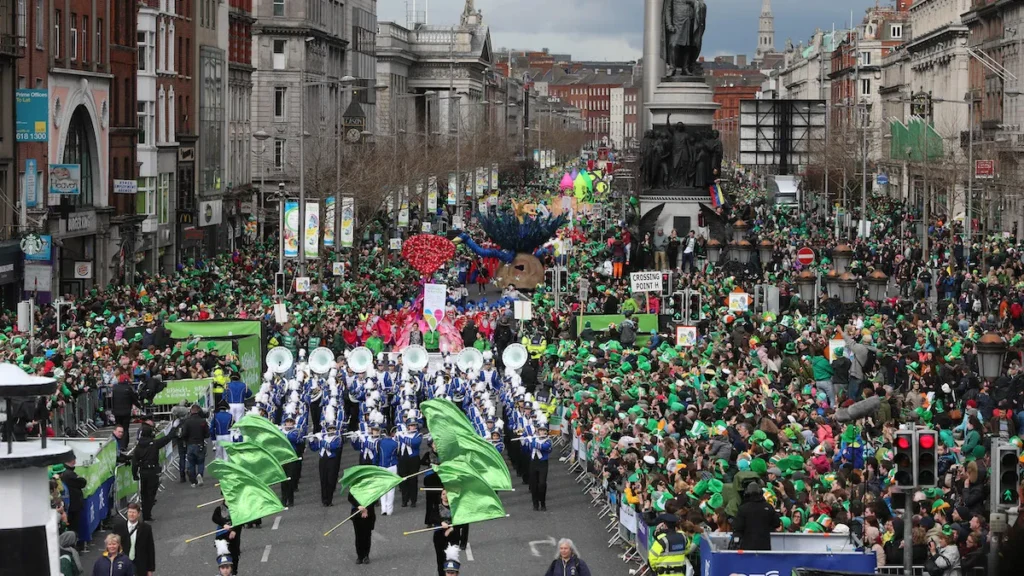
Good ole’ St Patrick’s Day, celebrated annually on March 17th, is known for its lively parades, green-themed festivities, and a lot of merriment. Yet, beneath the surface, the holiday embodies a deeper spiritual significance. This article delves into the spiritual meaning of St Patrick’s Day, the life of Saint Patrick, and the enduring spiritual lessons we can glean from his remarkable journey.
Table of Contents
- 1 Who Was Saint Patrick?
- 2 The Conversion and Mission of Patrick
- 3 The Shamrock Symbol and the Holy Trinity
- 4 The Legend of Banishing Snakes
- 5 Celebrations of St Patrick’s Day
- 6 Lessons from the Life of Saint Patrick
- 7 St Patrick’s Day Around the World
- 8 The Legacy of St Patrick’s Day
- 9 Conclusion
- 9.1 What is the true meaning of St. Patrick’s Day?
- 9.2 What is the myth behind Saint Patrick’s Day?
- 9.3 What is the superstition about St. Patrick’s Day?
- 9.4 What is the Irish St. Patrick Day symbol?
- 9.5 What are 10 facts about St Patrick?
- 9.6 Why is St Patrick’s Day controversial?
- 9.7 What gives you bad luck on St Patrick’s Day?
- 9.8 Why are Americans obsessed with St Patrick’s day?
Who Was Saint Patrick?
Saint Patrick, Ireland’s patron saint, was a 5th-century Christian missionary and bishop. His life was fraught with trials and tribulations that shaped his faith and defined his spiritual journey. Patrick was born in Roman Britain, and his father was a deacon in the Christian church. At 16, he was abducted by Irish raiders and sold into slavery in Ireland.
During his six years in bondage, Patrick turned to his Christian faith for solace. He spent his days as a shepherd, praying and nurturing his faith in solitude. One night, he received a vision from God that guided him to escape his captors and return to Britain. Patrick did escape and made his way back home, where he decided to dedicate his life to Christianity.
The Conversion and Mission of Patrick
Patrick’s spiritual journey took a remarkable twist when he had a dream about the Irish people calling him back to Ireland. This vision compelled him to return to the land where he was once a slave. His mission was to bring the message of Christianity to the Irish people, who were then predominantly pagans.
Patrick’s mission to spread Christianity among the Irish forms a core part of the spiritual significance of St Patrick’s Day. It is a testament to his unwavering faith and dedication to spreading the word of God.
The Shamrock Symbol and the Holy Trinity
One of the most enduring symbols associated with St Patrick’s Day is the shamrock – a three-leafed plant that Patrick is said to have used to explain the concept of the Holy Trinity to the pagan Irish. The Holy Trinity, in Christian belief, refers to God as three persons – the Father, the Son, and the Holy Spirit. The shamrock, with its three leaves, served as an ideal metaphor.
The shamrock is a powerful symbol of Christian faith, unity, and the teachings of Patrick. It’s a fundamental part of the spiritual meaning of St Patrick’s Day.
The Legend of Banishing Snakes
A popular legend associated with Saint Patrick is that he expelled all snakes from Ireland. While Ireland has never had any indigenous snakes, this tale likely symbolizes Patrick’s spiritual mission to eradicate pagan practices and introduce Christianity.
The legend of banishing snakes underscores the transformative power of faith and reflects the spiritual battles Patrick fought to establish Christianity in Ireland.
Celebrations of St Patrick’s Day
Today, St Patrick’s Day is celebrated with much enthusiasm worldwide. The festivities include parades, wearing green attire or shamrocks, and attending church services. For Christians, the Lenten restrictions on eating and drinking alcohol are lifted on this day, which has encouraged and propagated the holiday’s tradition of alcohol consumption.
While St Patrick’s Day is known for its festive celebrations, the spiritual essence of the day remains intact, reminding us of Patrick’s remarkable journey and his unwavering faith.
Lessons from the Life of Saint Patrick
St Patrick’s life offers several spiritual lessons that are integral to understanding the profound meaning of St Patrick’s Day.
- The Power of Faith and Redemption: Patrick’s journey from slavery to sainthood demonstrates the transformative power of faith and the possibility of redemption.
- The Importance of Mission and Purpose: Patrick’s mission to convert the Irish to Christianity exemplifies the significance of a higher purpose in life.
- Unity in Trinity: The shamrock symbolizes the unity within the Holy Trinity, emphasizing the importance of unity and harmony in our lives.
- Overcoming Adversity: Patrick’s journey is a testament to the human spirit’s ability to overcome adversity and find purpose in life.
St Patrick’s Day Around the World
St Patrick’s Day has transcended the borders of Ireland and is celebrated globally, especially in countries with a strong Irish diaspora like the United States, Canada, Australia, and the United Kingdom. Major landmarks around the world are lit in green as part of the “Global Greening Initiative.”
The global celebration of St Patrick’s Day underscores the universal appeal of faith, hope, and redemption that this day symbolizes.
The Legacy of St Patrick’s Day
St Patrick’s Day has left a profound mark on both the spiritual and cultural landscapes worldwide. It serves as a testament to the enduring legacy of this remarkable saint and his message of faith and redemption.
Conclusion
In conclusion, St Patrick’s Day goes beyond the festive parades and green attire. It is a day that reminds us of a man’s extraordinary journey from slavery to sainthood, driven by unwavering faith and a deep sense of purpose. The spiritual significance of this day resonates with people of all backgrounds and beliefs, emphasizing the universality of faith, hope, and redemption.
What is the true meaning of St. Patrick’s Day?
The true meaning of St Patrick’s Day lies in commemorating St Patrick and celebrating the arrival of Christianity in Ireland. It’s a day that embodies faith, hope, redemption, and the transformative power of spirituality.
What is the myth behind Saint Patrick’s Day?
The myth behind St Patrick’s Day includes the legend of St Patrick banishing all snakes from Ireland, which symbolizes the eradication of pagan practices and the introduction of Christianity to Ireland.
What is the superstition about St. Patrick’s Day?
St Patrick’s Day is surrounded by various superstitions. One such superstition is that wearing green brings good luck, while not wearing green can result in a pinch from a leprechaun.
What is the Irish St. Patrick Day symbol?
The Irish symbol for St Patrick’s Day is the shamrock, a three-leafed plant that St Patrick is said to have used to explain the concept of the Holy Trinity.
What are 10 facts about St Patrick?
- St Patrick was not Irish; he was born in Roman Britain.
- At 16, St Patrick was kidnapped by Irish pirates and sold into slavery.
- He spent six years as a slave in Ireland, during which he turned to Christianity for solace.
- A divine vision guided him to escape slavery and return to Britain.
- After his escape, he became a priest and felt called to return to Ireland to convert the Irish to Christianity.
- St Patrick used the shamrock to explain the concept of the Holy Trinity.
- He is said to have banished all snakes from Ireland.
- St Patrick’s Day is celebrated on March 17th, believed to be the date of his death.
- The first St Patrick’s Day parade was held in the United States, not Ireland.
- Today, St Patrick’s Day is celebrated worldwide with parades, wearing of green attire, and public festivals.
Why is St Patrick’s Day controversial?
St Patrick’s Day has been criticized for perpetuating stereotypes of the Irish as heavy drinkers. Some argue that the holiday has become overly commercialized and strayed from its spiritual and cultural roots.
What gives you bad luck on St Patrick’s Day?
Not wearing green on St Patrick’s Day is considered to bring bad luck, according to a popular superstition. This belief is tied to the legend of leprechauns, who are said to pinch anyone they can see (i.e., anyone not wearing green).
Why are Americans obsessed with St Patrick’s day?
Americans’ fascination with St Patrick’s Day can be attributed to the large Irish diaspora in the U.S. The day offers a way to celebrate Irish heritage and participate in festive traditions. It is also seen as a day of fun and celebration, which aligns with America’s fondness for holidays and festivities.
This extensive exploration of St Patrick’s Day offers a holistic view of the holiday’s spiritual significance, traditions, and its evolving role in contemporary society. May it inspire you to celebrate this day with a deeper appreciation of the values it represents and the enduring legacy of St Patrick.
